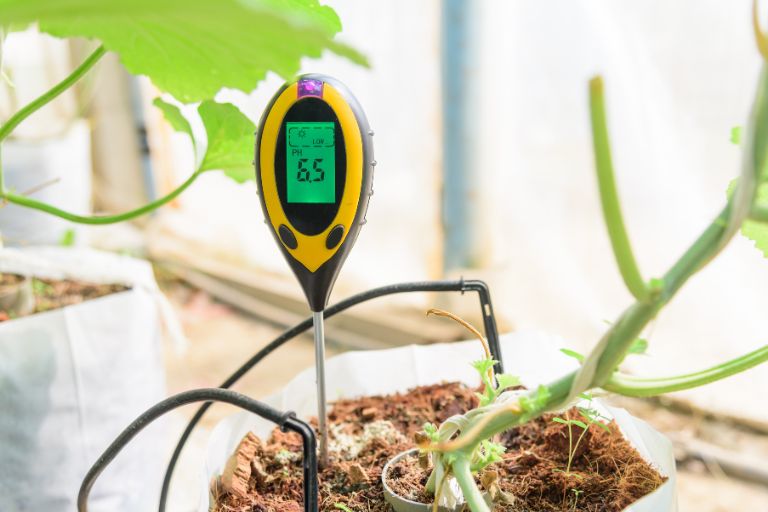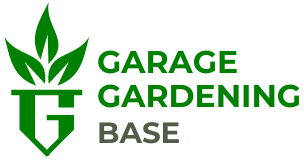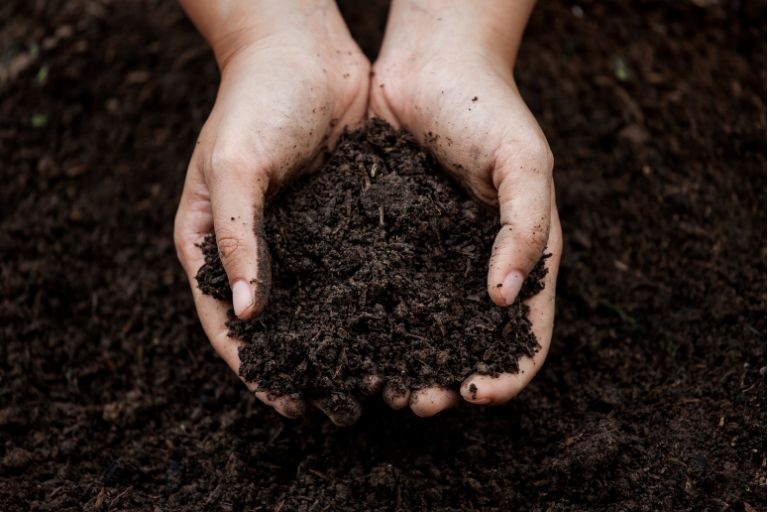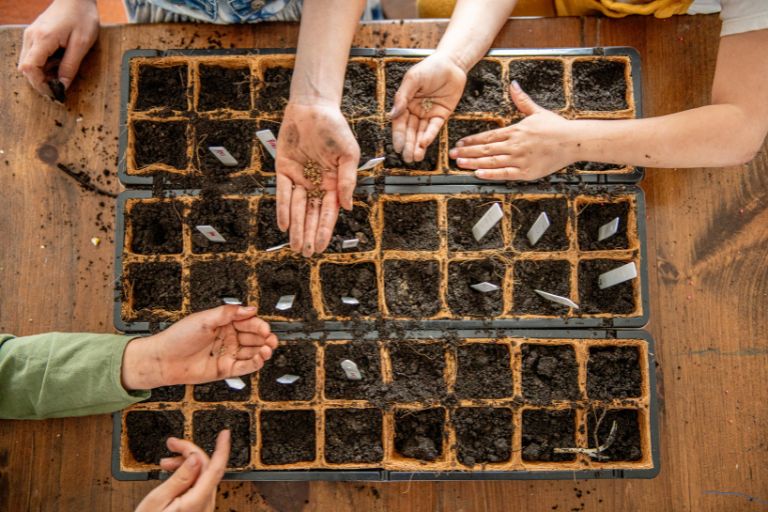Smart Gardening: Revolutionising Urban Agriculture with Technology

As the world increasingly embraces sustainability and reconnects with nature, innovative solutions are emerging to bring the green back into city living. Among these solutions, the concept of garage gardening has gained traction, offering a transformative way for city dwellers to cultivate their own green oasis within the confines of their homes.
But what sets modern garage gardening apart from traditional methods is the infusion of smart technology. Imagine a garden that waters itself, adjusts its lighting to the plants’ needs and sends you alerts when it needs attention – all from the convenience of your smartphone. This is the promise that smart technology holds for garage gardening enthusiasts, revolutionising the way we interact with and maintain our green spaces.
This article delves into the world of garage gardening automation, exploring the myriad ways smart technology is reshaping urban agriculture. From automated irrigation systems to LED grow lights and advanced monitoring tools, we uncover the tools and techniques that are enabling individuals to grow thriving gardens in the most unlikely of places. Come with us on this journey and discover the potential of automation to make gardening not only more accessible, but also more efficient and sustainable for the modern city dweller.
Introduction
Garage gardening is the transformation of unused or under-used garage spaces into vibrant green oases. It’s a creative adaptation born out of necessity, responding to the growing desire of individuals to reconnect with nature despite the constraints of urban living. What was once just a place to store cars and other miscellaneous items is now being transformed into a sanctuary for plants, offering a refreshing escape from the urban bustle.
The appeal of garage gardening lies in its versatility and adaptability. Whether you have a single-car garage or a spacious multi-car facility, the possibilities for creating a personalised garden oasis are endless. From vertical gardens and hanging planters to hydroponic systems and raised beds, garage gardening allows urbanites to unleash their creativity and cultivate lush green spaces right at home.
As concerns about food security, environmental sustainability and mental wellbeing continue to grow, garage gardening is becoming increasingly popular among city dwellers. Not only does it offer a practical solution to the space constraints of city living, but it is also a fulfilling way to reconnect with nature and live a more sustainable lifestyle. In the following sections, we’ll explore how the integration of smart technology is further enhancing the garage gardening experience, making it more accessible, efficient and enjoyable than ever before.
Challenges of urban gardening
While urban gardening can be immensely rewarding, it comes with its fair share of challenges that can deter even the most enthusiastic green thumbs. From limited space to unpredictable climates and busy schedules, urban gardeners face a unique set of obstacles that require creative solutions and strategic planning.
Space constraints
– One of the biggest challenges in urban gardening is space. In densely populated cities, outdoor green spaces are often limited to small balconies, rooftops or even windowsills.
– Limited space limits the types and quantities of plants that can be grown, leading urban gardeners to prioritise compact and space-efficient varieties.
– Competition for space with other urban necessities such as parking and recreational facilities further complicates the issue, leaving little room for traditional gardening.
Climate factors
– Urban environments often have microclimates that are influenced by factors such as buildings, paving and pollution. These microclimates can create difficult growing conditions, including excessive heat, limited airflow and pollution-related stress on plants.
– Extreme weather events such as heat waves, storms and droughts pose additional risks to urban gardens and require careful planning and mitigation strategies to protect plants from damage.
Time constraints
– Urban dwellers lead busy lifestyles, juggling work, family and social commitments, leaving little time for gardening.
– Maintaining a garden requires regular attention and care, including watering, pruning, weeding and pest control, which can be difficult to fit into a hectic schedule.
– Seasonal changes in daylight hours and temperature can also affect the time available for gardening, with shorter days in winter limiting the amount of daylight available for outdoor activities.
Role of smart technology
Advances in smart technology have ushered in a new era of gardening, changing the way we care for and grow plants. From automated irrigation systems to intelligent monitoring devices, smart technology has revolutionised gardening practices in several key ways:
Precision irrigation
– Smart irrigation systems use sensors to monitor soil moisture and weather conditions in real time.
– By precisely regulating water use based on plant needs and environmental factors, these systems help prevent overwatering and underwatering, promoting healthier growth and conserving water resources.
Climate control
– Indoor and urban gardeners face challenges in maintaining optimal growing conditions due to limited space and environmental factors.
– Intelligent climate control systems integrate sensors and automation technology to regulate temperature, humidity and airflow to create the ideal microclimate for plant growth.
Remote monitoring and control
– Smart gardening devices such as soil moisture sensors, pH meters and environmental monitors provide real-time data on plant health and growing conditions.
– Gardeners can access this information remotely via smartphone apps or web interfaces, allowing them to monitor and adjust settings from anywhere, at any time.
Automated Lighting
– LED grow lights with intelligent features allow precise control of light intensity, spectrum and duration, mimicking natural sunlight for optimal plant growth.
– Automated lighting schedules ensure consistent and efficient use of energy while promoting photosynthesis and flowering in indoor gardens.
Nutrient Management
– Intelligent nutrient delivery systems automate the process of fertilisation and pH adjustment, ensuring plants receive the right balance of nutrients for healthy growth.
– These systems can be programmed to deliver nutrients on a schedule or in response to real-time sensor data, optimising plant uptake and minimising waste.
Pest and disease detection
– Intelligent sensors and imaging technology can detect early signs of pest infestation or plant disease, allowing for timely intervention and treatment.
– By identifying problems before they escalate, smart gardening technology can help prevent crop loss and minimise the need for chemical pesticides.
Data analysis and insights
– Smart gardening platforms collect and analyse data from various sensors and devices, providing valuable insights into plant performance, environmental trends and resource use.
– Gardeners can use this information to optimise growing conditions, improve yields and make informed decisions about plant selection and management.

Automation tools for garage gardening
Smart irrigation systems represent a significant leap forward in garage gardening, offering numerous benefits over traditional watering methods. Here’s a closer look at how automated watering schedules, soil moisture sensors, and weather-based adjustments enhance the efficiency and effectiveness of irrigation in garage gardens:
Automated watering schedules
– One of the key benefits of smart irrigation systems is the ability to set customised watering schedules based on the specific needs of plants.
– Users can program the system to water at optimal times of day, such as early morning or late evening, to minimise water loss through evaporation and ensure efficient uptake by plants.
– Automated watering schedules help maintain consistent soil moisture levels, preventing both under- and over-watering that can lead to root rot and other plant health problems.
Soil moisture sensors
– Smart irrigation systems are equipped with soil moisture sensors that continuously monitor soil moisture levels.
– These sensors provide real-time feedback to the system, allowing it to adjust the frequency and duration of watering based on current soil conditions.
– By ensuring that plants only receive water when they need it, soil moisture sensors help to conserve water and prevent water waste, making irrigation more environmentally sustainable.
Weather-based adjustments
– Smart irrigation systems can integrate weather forecast data to make real-time adjustments to watering schedules.
– During periods of rain or high humidity, the system can automatically reduce or skip watering sessions to avoid waterlogging the soil.
– Conversely, during periods of hot and dry weather, the system can increase watering frequency to compensate for increased evaporation rates and higher plant water requirements.
Gardeners have the ability to accurately and efficiently provide plants with the water they need by integrating automated watering schedules, soil moisture sensors and weather-based adjustments into intelligent irrigation systems.
LED (Light Emitting Diode) grow lights have revolutionised indoor gardening by providing a highly efficient and customisable lighting solution that closely mimics natural sunlight. Efficient LED grow lights mimic sunlight to help plants thrive:
Spectrum control
– LED grow lights are available in a wide range of spectrums, including blue, red and white, allowing growers to tailor the light spectrum to the specific needs of their plants.
– Different wavelengths of light affect different stages of plant growth, from seedling development to flowering and fruiting. LED lights can be adjusted to provide the ideal spectrum for each stage, promoting healthy growth and maximising yields.
Energy Efficiency
– LED grow lights are incredibly energy efficient compared to traditional lighting sources such as incandescent or fluorescent bulbs.
– LEDs convert a higher percentage of electrical energy into usable light, resulting in lower energy consumption and reduced running costs for indoor growers.
– The energy efficiency of LED grow lights also translates into less heat generation, minimising the risk of overheating and reducing the need for additional cooling systems in indoor grow environments.
Adjustable light intensity and duration
– LED grow lights allow growers to adjust both the intensity and duration of light exposure to meet the specific needs of different plant species.
– With precise control over light levels, growers can optimise photosynthesis, promote robust growth and enhance plant development without the risk of light stress or photoinhibition.
Low heat output
– Unlike traditional light sources, LED grow lights emit very little heat, making them safe to use in close proximity to plants without causing heat damage or burns.
– The low heat output of LED lights also reduces the risk of dehydration and wilting of plants, particularly in confined indoor spaces where ventilation may be limited.
Long life
– LED grow lights have an exceptionally long lifespan compared to traditional incandescent bulbs, lasting tens of thousands of hours before requiring replacement.
– The longevity of LED grow lights not only reduces maintenance costs and downtime, but also ensures consistent light output and performance over time, supporting healthy and productive plant growth.
Automated nutrient delivery systems represent a significant advance in garage gardening, offering precise control over the nutrients and pH levels that are essential for healthy plant development. For optimum plant growth, precise nutrient dosing and pH regulation are essential:
Nutrient balance
– Plants require a balanced supply of essential nutrients, including nitrogen, phosphorus, potassium, calcium, magnesium and micronutrients, to support their growth and development.
– Automated nutrient delivery systems ensure that plants receive the correct proportions of nutrients in their optimum forms and concentrations, avoiding deficiencies or toxicities that can affect growth and yield.
Customised formulations
– Different plant species and growth stages have different nutrient requirements. Automated systems allow growers to customise nutrient formulations based on the specific needs of their plants.
pH regulation
The pH of the nutrient solution plays a critical role in nutrient availability and uptake by plants. Most plants prefer a slightly acidic to neutral pH range (typically between 5.5 and 6.5) for optimal nutrient uptake.
Automated nutrient delivery systems monitor and adjust the pH of the nutrient solution to maintain the desired range, preventing nutrient lockout or deficiencies caused by pH imbalance.
Prevent nutrient imbalances
– Imbalances in nutrient levels or pH can lead to several growth disorders, including nutrient deficiency, nutrient toxicity or pH-induced nutrient lockout.
– Automated nutrient delivery systems continuously monitor nutrient levels and pH, making real-time adjustments to ensure plants receive the right nutrients in the right proportions and at the right pH.
Consistency and precision
– Manual mixing and dosing of nutrients is prone to human error and inconsistency, resulting in uneven nutrient distribution and sub-optimal plant growth.
– Automated systems deliver nutrients with precision and consistency, eliminating the guesswork and variability associated with manual nutrient management.
Time and labour savings
– Automated nutrient delivery systems reduce the time and labour required for nutrient management, allowing growers to focus on other aspects of gardening.
– Growers can achieve better results with less effort and supervision, making garage gardening more accessible and enjoyable by automating nutrient dosing and pH regulation.
Monitoring and control systems equipped with mobile apps and sensors offer gardeners unparalleled convenience and precision in managing their plants’ environment. This is how these systems are improving monitoring and managing plant health, temperature and humidity:
Remote monitoring
– Mobile apps linked to sensors installed in the garage garden allow growers to remotely monitor key environmental parameters such as temperature, humidity, light levels and soil moisture.
– Growers can access real-time data and receive instant notifications on their smartphones, allowing them to stay informed about the condition of their plants regardless of their location.
Plant health tracking
– Sensors integrated into monitoring systems can measure key indicators of plant health, such as leaf temperature, leaf moisture and leaf colour.
– By tracking these parameters over time, growers can identify early signs of stress, disease or nutrient deficiencies and take corrective action to prevent further damage and promote plant recovery.
Temperature and humidity control
– Monitoring systems allow growers to maintain optimal temperature and humidity levels in the greenhouse by remotely controlling heating, cooling and ventilation equipment.
– Mobile apps allow growers to adjust temperature set points, activate fans or humidifiers, and monitor temperature and humidity trends over time to ensure a stable and conducive growing environment for plants.
Light intensity management
– Sensors built into monitoring systems measure light intensity and duration, helping growers optimise artificial lighting schedules for indoor plants.
– Growers can use mobile apps to remotely adjust the intensity and duration of LED grow lights, ensuring plants receive the right amount of light for photosynthesis and growth without risking light stress or energy waste.
Data analysis and insight
– Monitoring systems collect and store historical data on environmental conditions, plant health and growth parameters, providing growers with valuable insights into their garden’s performance.
–Mobile apps provide visualisation tools and analysis capabilities that allow growers to analyse trends, identify patterns and make data-driven decisions to optimise growing conditions and maximise yields.
Timely intervention
– Instant notifications and alerts delivered through mobile apps enable growers to respond quickly to any deviations from desired environmental conditions or plant health status.
Benefits of automation
Increased yields
– Intelligent technology optimises growing conditions by providing precise control over factors such as lighting, temperature, humidity and nutrient supply.
– Automation systems foster optimal conditions for plant growth, facilitating robust development, accelerated growth, and increased yields of fruits, vegetables, herbs, and flowers.
Reduced water consumption
– Automated irrigation systems equipped with soil moisture sensors and weather-based adjustments ensure that plants receive the right amount of water at the right time.
– By delivering water only when needed and avoiding over-watering, intelligent irrigation systems conserve water resources, minimise run-off and promote water efficiency in garage gardens.
Minimised maintenance
– Smart gardening systems streamline routine tasks such as watering, lighting control and nutrient management, reducing the time and effort required for garden maintenance.
– Automated monitoring and control systems provide real-time data on plant health, environmental conditions and system performance, allowing growers to identify problems early and take preventative action.
Improved plant health and quality
– Precise control of environmental variables and nutrient delivery ensures that plants receive optimal conditions for growth and development.
Resource efficiency
– Smart technology optimises resource use by delivering inputs such as water, nutrients and light in a targeted and efficient manner.
Remote monitoring and control
– Mobile apps and remote access capabilities allow growers to monitor and manage their garage gardens from anywhere, at any time.
– Remote monitoring allows growers to stay connected to their plants and respond quickly to changing conditions or alerts, even when they are away from home.
Customisation and flexibility
– Automation systems offer customisable settings and configurations to meet the unique needs of different plant species, growth stages and environmental conditions.
– Growers can adjust parameters such as lighting schedules, nutrient formulations and irrigation settings to optimise plant growth and tailor their gardening experience to their preferences.
Considerations and challenges
While there are many benefits to adopting smart gardening solutions, including increased efficiency and improved plant health, there can be concerns about the affordability of these technologies. To address and manage the initial set-up costs associated with smart gardening, here’s how growers can get started:
Budget planning
– Before investing in smart gardening solutions, it’s important for gardeners to assess their budget and prioritise their needs and preferences.
– By setting a realistic budget and researching available options, gardeners can find cost-effective solutions that fit their financial constraints while still meeting their gardening goals.
Start small
– Smart gardening doesn’t have to mean a complete overhaul of existing gardening equipment. Growers can start small by investing in one or two key automation tools or devices and gradually expand their smart gardening infrastructure over time.
– Prioritising key components, such as automated irrigation systems or LED grow lights, can provide immediate benefits while minimising upfront costs.
Comparison shopping
– Gardeners should research different smart gardening products, brands and retailers to compare prices and features.
– Look for discounts, promotions and bundled packages that may offer cost savings on essential equipment or components.
DIY solutions
– For growers with technical skills or a DIY mindset, building or customising smart gardening solutions from affordable components and open source platforms can be a cost-effective alternative to purchasing commercial products.
– DIY projects allow growers to tailor automation systems to their specific needs and budget constraints, while gaining valuable hands-on experience with gardening technology.
Long-term savings
– While the upfront costs of smart gardening solutions may seem daunting, it’s important to consider the long-term savings and benefits they offer.
– Automated systems can reduce water and energy consumption, minimise plant loss due to environmental fluctuations and increase yields over time, leading to cost savings and improved productivity in the long run.
Financing options
– Some retailers or manufacturers may offer financing options or instalment plans to help spread the cost of smart gardening equipment over time.
– Growers can also explore government incentives, grants or rebates for energy-efficient and sustainable gardening technologies that can help offset the initial investment costs.
For beginners, the prospect of setting up and managing automated gardening systems can seem daunting due to the complexities involved. To help you navigate the learning curve and ensure a smooth transition to using automated gardening technology, here are some tips:
Start with simple systems
– Start with simple automated systems that are easy to install and operate, such as basic watering timers or pre-set LED grow lights.
– Familiarise yourself with the functionality and features of each component before moving on to more advanced automation tools.
Read manuals and guides
– Take the time to thoroughly read the owner’s manuals, user guides and online tutorials provided by the manufacturer for each automated system.
– Look for setup instructions, programming guidelines, troubleshooting tips and safety precautions to ensure proper installation and operation.
Take small steps
– Break the setup process into manageable steps and tackle one component or task at a time.
– Start with the basics, such as installing sensors or timers, before moving on to more complex tasks, such as programming nutrient delivery systems or configuring mobile apps.
Experiment and learn
– Don’t be afraid to experiment with different settings and configurations to understand how each automated system affects plant growth and performance.
– Observe how changes in environmental conditions, such as light intensity or watering frequency, affect plant health and adjust settings accordingly based on your observations.
Seek support and advice
– Turn to fellow gardeners, online forums or gardening communities for advice, tips and troubleshooting.
– Many experienced growers are willing to share their knowledge and expertise to help beginners overcome challenges and achieve success with automated gardening systems.
Be patient and persistent
– Remember that learning to use automated gardening technology takes time and practice. Be patient with yourself as you navigate the learning curve and don’t get discouraged by setbacks or mistakes.
– Stay persistent and committed to mastering the use of automated systems, knowing that the knowledge and skills you gain will ultimately improve your gardening experience and productivity.
Continue to learn and improve
– Keep abreast of the latest advances and updates in automated gardening technology through online resources, workshops and seminars.
– Continually seek opportunities to expand your knowledge and skills in managing automated systems, adapting to new challenges and optimising your gardening practices for success.
While smart gardening equipment offers many benefits, it’s important to recognise the importance of regular maintenance and troubleshooting to ensure longevity and optimum performance. This is why maintenance is so important and how gardeners can effectively manage how much they need to do:
Preventing wear and tear
– Like any other electronic or mechanical device, smart gardening products are subject to wear and tear over time.
– Regular maintenance helps prevent problems such as corrosion, rust and mechanical failure that can affect the functionality and reliability of the equipment.
Maximise efficiency
– Proper maintenance ensures that smart gardening equipment operates at peak efficiency, providing accurate readings, precise control and consistent performance.
– Routine maintenance tasks such as cleaning sensors, calibrating sensors and controllers, and replacing worn components help maintain the accuracy and reliability of the equipment.
Extend life
– Regular maintenance extends the life of smart gardening equipment, reducing the need for costly repairs or premature replacement.
– By addressing minor issues promptly and implementing preventive maintenance measures, growers can ensure their equipment remains operational and functional for years to come.
Ensure safety
– Neglected or poorly maintained equipment poses safety risks to both facilities and users. Malfunctioning sensors, faulty wiring or damaged components can lead to accidents, electrical hazards or damage to crops.
– Regular inspections and maintenance checks help identify potential safety hazards and address them before they escalate into more serious problems.
Troubleshooting and problem solving
– Despite regular maintenance, intelligent gardening equipment may occasionally experience problems or malfunctions.
– Growers should familiarise themselves with common troubleshooting techniques and diagnostic procedures to identify and resolve problems efficiently.
– Use manufacturer’s manuals, online resources and support forums for troubleshooting advice and guidance on resolving technical issues.
Create a maintenance schedule
– Establish a regular maintenance schedule for smart gardening devices, including routine checks, cleaning and calibration tasks.
– Keep detailed records of maintenance activities, including dates, tasks performed and any problems encountered, to track equipment performance and identify patterns or trends over time.
Continuous monitoring and adjustment
– Remain vigilant and proactive in monitoring equipment performance and plant health indicators such as environmental conditions, nutrient levels and growth patterns.
– Adjust maintenance routines and equipment settings as needed based on changing conditions, seasonal variations and crop requirements to optimise performance and maximise yields.
Future trends
Artificial Intelligence (AI) integration
– The integration of AI technology into garage garden automation systems will enable more advanced data analysis, predictive modelling and adaptive control algorithms.
– AI-powered systems can learn from environmental data, plant responses, and user preferences to optimise growing conditions, anticipate plant needs, and make real-time adjustments for optimal growth and productivity.
Internet of Things (IoT) connectivity
– IoT-enabled sensors and devices will continue to play an important role in garage garden automation, enabling seamless connectivity, remote monitoring and control via smartphones, tablets and other smart devices.
– IoT platforms will enable gardeners to access real-time data, receive alerts and manage their gardens from anywhere in the world, promoting greater flexibility and convenience in gardening practices.
Modular and scalable systems
– Future automation systems will feature modular designs and scalable architectures, allowing growers to customise and expand their facilities to meet changing needs and growing conditions.
– Modular components such as sensor modules, controllers and actuators will offer greater flexibility in system configuration and adaptation to different garden layouts and crop requirements.
Sustainable technologies
– There will be a growing emphasis on integrating sustainable technologies and practices into garage gardening automation, such as renewable energy sources, water recycling systems and environmentally friendly materials.
– Sustainable automation solutions will help reduce environmental impact, minimise resource consumption and promote eco-conscious gardening practices in urban and indoor environments.
Robotics and automation
– Robotics and automation technologies will continue to advance, providing innovative solutions for tasks such as planting, pruning, harvesting and maintenance in garage gardens.
– Robotic systems equipped with AI, computer vision and robotic arms will automate labour-intensive tasks, improve efficiency and optimise resource use in gardening operations.
Vertical farming and hydroponics
– Vertical farming systems and hydroponic setups will become increasingly popular in garage gardening automation, allowing growers to maximise space efficiency and produce high yields in compact indoor environments.
– Automated vertical farming towers, hydroponic racks and aeroponic systems will enable year-round cultivation of a wide range of crops, from leafy greens and herbs to fruits and vegetables.
The integration of smart technology into garage gardening is a significant step forward in the pursuit of sustainable urban agriculture and living. By adopting automation tools such as smart irrigation systems, LED grow lights, nutrient delivery systems and monitoring/control systems, urban gardeners can reap numerous benefits. These include increased yields, reduced water consumption, minimised maintenance and improved plant health, all of which contribute to more efficient and sustainable gardening practices.
This research highlights the efficiency and precision that smart technology brings to gardening, ensuring optimal growing conditions and resource utilisation for plants. In addition, automation tools make gardening more accessible and convenient for urban dwellers with limited time, space and gardening experience.
In addition, smart gardening technologies promote sustainability and resilience by conserving water, reducing energy consumption and minimising environmental impact. As emerging technologies such as AI, IoT, robotics and vertical farming continue to drive innovation and collaboration, new possibilities and solutions are emerging in the urban agriculture sector.
To sum up, the potential for smart technology to revolutionise urban farming and sustainable living is huge. By harnessing the power of automation, we can cultivate thriving garden ecosystems in urban environments that promote food security, environmental stewardship and community resilience. As we embrace these advances and continue to explore new frontiers in smart gardening, we are moving closer to a future where green spaces thrive and city dwellers live in harmony with the natural world.






